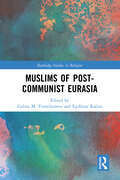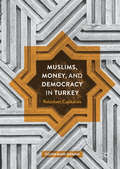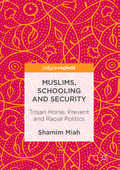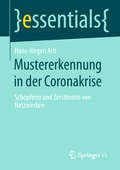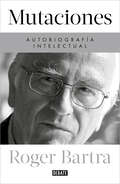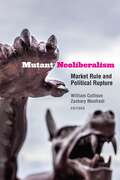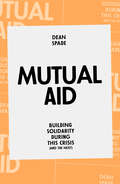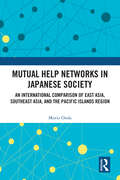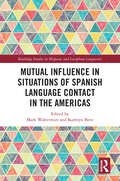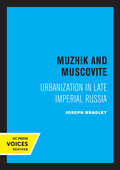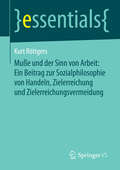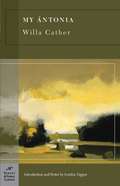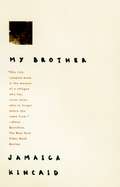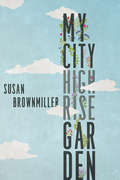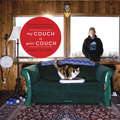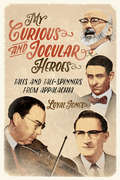- Table View
- List View
Muslims of Post-Communist Eurasia (Routledge Studies in Religion)
by Egdūnas Račius Galina M. YemelianovaThis book discusses the evolution of state governance of Islam and the nature and forms of local Muslims’ rediscovery of their ‘Muslimness’ across post-communist Eurasia. It examines the effects on the Islamic scene of the political and ideological divergence of Central and South-Eastern Europe from Russia and most of the Caucasus and Central Asia. Of particular interest are the implications of the proliferation of new, ‘global’ interpretations of Islam and their relationship with existing ‘traditional’ Islamic beliefs and practices. The contributions in this book address these issues through an interdisciplinary prism combining history, religious studies/theology, social anthropology, sociology, ethnology and political science. They analyse the greater public presence of Islam in constitutionally secular contexts and offer a critique of the domestication and accommodation of Islam in Europe, comparing these to what has happened in the international Eurasian space. The discussion is informed by the works of such thinkers as Talal Asad, Bryan Turner, Veit Bader, Marcel Maussen and Bassam Tibi, and utilises primary and secondary sources and ethnographic observation. Looking at how collectivities and individuals are defining what it means to be Muslim in a globalised Islamic context, this book will be of great interest to scholars of Religious Studies, Islamic Studies, Political Science, Sociology and Anthropology.
Muslims, Minorities, and the Media: Discourses on Islam in the West (Routledge Research in Religion, Media and Culture)
by Laurens de RooijInspired by overtly negative coverage by the Western mainstream press of Muslims in particular, and minorities in general, this book asks: Why are negative narratives and depictions of Muslims and other minorities so hard to change? News reports about Islam and Muslims commonly relate stories that discuss terrorism, violence or other unwelcome or irrational behaviour, or the lack of integration and compatibility of Muslims and Islam with Western values and society. Yet there is little research done on how studies on media reports about minorities seemingly fail to improve the situation. Combining empirical research with a structural analysis of the media industry, this volume presents evidence for the maligned representation of minorities by media corporations, analysing why negative narratives persist and outlining how these can be effectively transformed. It is an outstanding resource for students and scholars of media, religion, culture, sociology, and Islamic studies, and is also of benefit for journalists, media representatives, and activists looking to effect change for minority representation in the media industry specifically or in society at large.
Muslims, Money, and Democracy in Turkey: Reluctant Capitalists
by Özlem Madi-SismanThis book contextualizes the rise of a neo-Islamic Turkish bourgeoisie class with a particular reference to the relationship between Islam and Capitalism, and makes the argument for their ultimate compatibility . Additionally, the claim is made that the formation of this new socio-economic class has been detrimental to Turkey's efforts to consolidate its democracy. In order to analyze these processes, an Islamic-oriented young business group, Economic Entrepreneurship and Business Ethic Association (IGIAD), was taken as a case study. Drawing on fieldwork in examining IGIAD’S mission, vision, and activities, the book argues that such associations were born as a response to increasing tension between capitalism and Islam, with the aim of creating a ‘moral’ economy within global capitalism.
Muslims, Schooling and Security: Trojan Horse, Prevent and Racial Politics
by Shamim MiahThis book focuses on the recent educational policy debates surrounding Muslims, schooling and the question of security in light of the Counter Terrorism Security Act – which has made ‘Prevent’ a legal duty for schools, colleges and universities. The book examines the infamous ‘Trojan Horse’ affair in Birmingham, and critically evaluates the security discourses in light of theoretical insights from the study of racial politics. The sociology of race and schooling in the UK has long been associated with a number of diverse areas of study, including racial inequality, multiculturalism, citizenship and identity; however, until very recently, very little attention has been given to securitization and race within the context of education and even less focus has been given to the links between the question of security and racial politics. This book makes a much-needed and timely contribution to debates on the complex relationship between racial politics and schooling, and will make compelling reading for students and researchers in the fields of education and sociology, as well as education policy makers.
Mustererkennung in der Coronakrise: Schöpferin und Zerstörerin von Netzwerken (essentials)
by Hans-Jürgen ArltMitten im digitalen Fortschritt grätscht die Natur dazwischen. Von der Coronakrise lässt sich die Moderne nicht aufhalten auf ihrem Weg in die Computergesellschaft. Aber sie gerät unter verschärfte Beobachtung. Die Massenmedien legen den Sinnschleier der Krise über den öffentlichen Disput. Die Politik zeigt in der Funktion der Risikomanagerin, was sie (nicht) kann. Die Wirtschaft kämpft darum, den Status als Primus des Alltags zurückzugewinnen. Organisationen und Personen machen die klassische Krisenerfahrung, dass Schwache für Opferrollen prädestiniert sind. Spricht etwas dafür, dass die moderne Steigerungslogik von Nachhaltigkeit abgelöst, Konkurrenzdynamik von Kollaboration zivilisiert, Kommerzialisierung von Solidarität begrenzt wird? Das Essential entwickelt eine eigene Perspektive auf Phänomene und Potentiale.
Mutaciones. Autobiografía intelectual
by Roger BartraEstas memorias son el registro del devenir intelectual y personal de Roger Bartra, un atisbo a la conciencia que anima su vida y pensamiento. En esta autobiografía Roger Bartra examina un nudo formado por tres hilos que se extienden a lo largo de su vida intelectual; tres flujos que se mezclan en el pozo profundo de su conciencia. El primero es una obsesión por la verdad que domina su trabajo, a veces de manera estimulante y en ocasiones de forma esclavizadora. El segundo es la permanente sensación de ser extranjero, de ser un extraño enclavado en una sociedad que lo considera ajeno a ella. En tercer lugar, una inclinación por la rebeldía que ha tenido que controlar y domesticar para poder convivir con sus semejantes. Estos flujos, confiesa, le han provocado una permanente sensación de encierro, de estar preso de verdades dogmáticas, de estar en la cárcel de una identidad anómala y de estar poseído por una furia que es necesario mantener atrapada. Pero cuando el nudo se desata, Bartra se siente liberado e impulsado a una búsqueda de verdades frescas y renovadoras, alentado por una rebeldía creativa y estimulante sin estar atado a identidades fija
Mutant Neoliberalism: Market Rule and Political Rupture
by William Callison and Zachary ManfrediTales of neoliberalism’s death are serially overstated. Following the financial crisis of 2008, neoliberalism was proclaimed a “zombie,” a disgraced ideology that staggered on like an undead monster. After the political ruptures of 2016, commentators were quick to announce “the end” of neoliberalism yet again, pointing to both the global rise of far-right forces and the reinvigoration of democratic socialist politics. But do new political forces sound neoliberalism’s death knell or will they instead catalyze new mutations in its dynamic development?Mutant Neoliberalism brings together leading scholars of neoliberalism—political theorists, historians, philosophers, anthropologists and sociologists—to rethink transformations in market rule and their relation to ongoing political ruptures. The chapters show how years of neoliberal governance, policy, and depoliticization created the conditions for thriving reactionary forces, while also reflecting on whether recent trends will challenge, reconfigure, or extend neoliberalism’s reach. The contributors reconsider neoliberalism’s relationship with its assumed adversaries and map mutations in financialized capitalism and governance across time and space—from Europe and the United States to China and India. Taken together, the volume recasts the stakes of contemporary debate and reorients critique and resistance within a rapidly changing landscape.Contributors: Étienne Balibar, Sören Brandes, Wendy Brown, Melinda Cooper, Julia Elyachar, Michel Feher, Megan Moodie, Christopher Newfield, Dieter Plehwe, Lisa Rofel, Leslie Salzinger, Quinn Slobodian
Mutual Accompaniment and the Creation of the Commons
by Mary WatkinsA landmark book that maps a radical model not only for the “helping” professions but for the work of solidarity This timely and pathbreaking volume maps a radical model of accompaniment, exploring its profound implications for solidarity. Psychosocial and ecological accompaniment is a mode of responsive assistance that combines psychosocial understanding with political and cultural action. Accompaniment—grounded in horizontality, interdependence, and potential mutuality—moves away from hierarchical and unidirectional helping-profession approaches that decontextualize suffering. Watkins envisions a powerful paradigm of mutual solidarity with profound implications for creating commons in the face of societal division and indifference to suffering.
Mutual Aid: Building Solidarity During This Crisis (and the Next)
by Dean SpadeMutual aid is the radical act of caring for each other while working to change the world. Around the globe, people are faced with a spiralling succession of crises, from the Covid-19 pandemic and climate change-induced fires, floods, and storms to the ongoing horrors of mass incarceration, racist policing, brutal immigration enforcement, endemic gender violence, and severe wealth inequality. As governments fail to respond to—or actively engineer—each crisis, ordinary people are finding bold and innovative ways to share resources and support the vulnerable. Survival work, when done alongside social movement demands for transformative change, is called mutual aid.This book is about mutual aid: why it is so important, what it looks like, and how to do it. It provides a grassroots theory of mutual aid, describes how mutual aid is a crucial part of powerful movements for social justice, and offers concrete tools for organizing, such as how to work in groups, how to foster a collective decision-making process, how to prevent and address conflict, and how to deal with burnout. Writing for those new to activism as well as those who have been in social movements for a long time, Dean Spade draws on years of organizing to offer a radical vision of community mobilization, social transformation, compassionate activism, and solidarity.
Mutual Help Networks in Japanese Society: An International Comparison of East Asia, Southeast Asia, and the Pacific Islands Region
by Morio OndaOnda compares Japan’s traditional mutual help practices, an integral part of the nation’s societal fabric, with those of other countries across Asia, including Korea, China, Taiwan, the Philippines, Indonesia, Thailand, Malaysia, and Vietnam, and the Pacific islands region, namely Palau and Pohnpei.The book advocates for the revitalization of mutual help, which has declined due to modernization, characterized by changes in production and our urban lifestyle. It sheds light on the fading awareness of traditional mutual help practices and encourages the discovery of new connections and bonds in contemporary society. Onda’s comparative approach reveals the characteristics of mutual help networks based on the similarities (universality) with and differences (uniqueness) from Japan’s mutual help practices, which stem from the social structures of individual regions.A vital resource for scholars in sociology, folklore studies, social welfare, or economics and those interested in human connections, mutual help, and cooperation.
Mutual Influence in Situations of Spanish Language Contact in the Americas (Routledge Studies in Hispanic and Lusophone Linguistics)
by Mark Waltermire and Kathryn BoveMutual Influence in Situations of Spanish Language Contact in the Americas focuses on the structural results of contact between Spanish and Maya, Quechua, Guaraní, Portuguese, and English in the Americas. This edited volume explores the various ways in which these languages affect the linguistic structure of Spanish in situations of language contact, and also how Spanish impacts their linguistic structure. Across ten chapters, this book offers a broad survey of bidirectional influence in Spanish contact situations both geographically (in the US Southwest, the Yucatán Peninsula, the Andean regions of Ecuador and Peru, and the Southern Cone) and structurally (in the areas of phonetics, phonology, morphosyntax, semantics, and pragmatics). By examining the potential structural effects that two languages have on one another, it provides a novel and more holistic perspective on mutual linguistic influence than that of previous work on language contact. The volume serves as a reference on mutual influence in bilingual language varieties and will be of interest to researchers, scholars and graduate students in Hispanic linguistics, and more broadly in language contact.
Mutual Perception of the Blind and the Sighted
by Blind Relief Association DelhiMutual Perception of the Blind and the Sighted is a landmark study conducted by The Blind Relief Association to examine the reciprocal attitudes between blind and sighted people in India. It investigates how the sighted perceive blindness, how blind individuals view the sighted, and the influence of family, peers, and employers on these perceptions. The study reveals that societal prejudice and stereotypes often impose greater challenges than blindness itself, shaping self-image, opportunities, and community integration. By analyzing dimensions such as rejection, pity, overprotection, and acceptance, the book emphasizes the critical role of attitudes in rehabilitation and social inclusion. It is one of the earliest in-depth Indian studies on the psychological and social implications of blindness and remains a valuable resource for educators, policymakers, and disability advocates.
Muzhik and Muscovite: Urbanization in Late Imperial Russia
by Joseph BradleyThis title is part of UC Press's Voices Revived program, which commemorates University of California Press’s mission to seek out and cultivate the brightest minds and give them voice, reach, and impact. Drawing on a backlist dating to 1893, Voices Revived makes high-quality, peer-reviewed scholarship accessible once again using print-on-demand technology. This title was originally published in 1985.
Muziek en bewegen bij dementie
by Annemieke Vink Helma Erkelens Louwke MeinardiVeel van onze herinneringen zijn gekoppeld aan muziek. Dat geldt voor hoogtepunten als verliefd zijn en trouwen, en ook gebeurtenissen uit onze kindertijd zijn vaak verbonden met muziek. Het luisteren naar muziek levert voor mensen met dementie plezierige momenten op. Een bekende melodie als `Het dorp' van Wim Sonneveld bijvoorbeeld, brengt ze weer even terug in de tijd van toen.Muziek en bewegen bij dementie laat zien hoe je met eenvoudige middelen kunt bijdragen aan meer welbevinden en kwaliteit van leven: het zingen van een liedje tijdens het wassen, zachte muziek bij het opstaan, een dansje in de huiskamer, even naar buiten. Als praten niet meer kan, is nog wel contact mogelijk via muziek en bewegen.Dit boek is rijk gevuld met tips en voorbeelden voor verzorgenden, mantelzorgers en activiteitenbegeleiders, en beschrijft voor het management de wellicht benodigde omslag in denken en doen.Annemieke Vink (psycholoog) doceert Theorie muziektherapie aan het ArtEZ Conservatorium Enschede. Zij doet onder andere onderzoek naar de effecten van muziektherapie bij mensen met dementie. Helma Erkelens (historica) en Louwke Meinardi (socioloog) zijn freelance journalist/tekstschrijver en communicatieadviseur. Ze zijn beiden gespecialiseerd in zorg, met name in gezond en actief ouder worden en zorg voor ouderen.De tweede druk is inhoudelijk niet gewijzigd ten opzichte van de eerste druk.
Muße und der Sinn von Arbeit: Ein Beitrag Zur Sozialphilosophie Von Handeln, Zielerreichung Und Zielerreichungsvermeidung (essentials)
by Kurt RöttgersAusgehend von einer Klärung des Sinnbegriffs im Allgemeinen wird zunächst die Frage nach dem Sinn von Arbeit angegangen. Dabei zeigt sich, daß der Diskurs des neuzeitlichen Arbeitsethos, quasi zwischen den Zeilen, stets begleitet ist von den Gegenbegriffen des Nichtarbeitens. Unter diesen werden dann die Muße und die spezifische Zeitstruktur der Muße eigens behandelt. Schließlich wird erörtert, wie Muße und Arbeit im Sinnbegriff dialektisch miteinander verschränkt sind. Das dem Ökonomieprinzip komplementäre Kulturprinzip läßt die Zielerreichungsvermeidung als die Gestalt der Muße in Arbeit erscheinen. Abschließend werden Konsequenzen für die politische Theorie gezogen.
My Antonia
by Willa CatherThis book is a soulful and rich portrait of a pioneer woman’s simple yet heroic life. The spirited daughter of Bohemian immigrants, Ántonia must adapt to a hard existence on the desolate prairies of the Midwest. Enduring childhood poverty, teenage seduction, and family tragedy, she eventually becomes a wife and mother on a Nebraska farm. A fictional record of how women helped forge the communities that formed a nation, this is also a hauntingly eloquent celebration of the strength, courage, and spirit of America’s early pioneers.
My Body in Pieces
by Marie-Noëlle HébertA deeply emotional graphic memoir of a young woman’s struggles with self-esteem and body image issues.All Marie-Noëlle wants is to be thin and beautiful. She wishes that her thighs were slimmer, that her stomach lay flatter. Maybe then her parents wouldn’t make fun of her eating habits at family dinners, the girls at school wouldn’t call her ugly, and the boy she likes would ask her out. This all-too-relatable memoir follows Marie-Noëlle from childhood to her twenties, as she navigates what it means to be born into a body that doesn’t fall within society’s beauty standards.When, as a young teen, Marie-Noëlle begins a fitness regime in an effort to change her body, her obsession with her weight and size only grows and she begins having suicidal thoughts. Fortunately for Marie-Noëlle, a friend points her in the direction of therapy, and slowly, she begins to realize that she doesn’t need the approval of others to feel whole.Marie-Noëlle Hébert’s debut graphic memoir is visually stunning and drawn entirely in graphite pencil, depicting a deeply personal and emotional journey that encourages us to all be ourselves without apology. Key Text Featuresgraphic novelcomic style
My Brother
by Jamaica KincaidJamaica Kincaid's incantatory, poetic, and often shockingly frank recounting of her brother Devon Drew's life is also the story of her family on the island of Antigua, a constellation centered on the powerful, sometimes threatening figure of the writer's mother. Kincaid's unblinking record of a life that died too early speaks volumes about the difficult truths at the heart of all families.
My Brother Death (Death And Dying Ser.)
by Cyrus SulzbergerThis remarkable book by the distinguished journalist Cyrus Sulzberger is in a modern sense comparable to Burton’s famous The Anatomy of Melancholy.My Brother Death is a thoughtful and finely written effort to discern just what death is, to define both it and its relationship to man, to discuss how to meet its inevitable approach and what may lie beyond.To accomplish this purpose Mr. Sulzberger draws heavily from the history of human thought and experience, from all the principal religions of East and West; from the philosophers, saints, kings and heroes who one by one have crossed to the unknown.He documents and dramatizes the entire panorama of the ways in which men die: by acts curiously attributed to the God of disaster, pestilence, famine and illness; by man’s own hand in murder, war, cannibalism, capital punishment and religious persecution.How does death approach and how and why do the brave best prepare to meet it? Not only does the author introduce the reader to the reflections of outstanding men upon their final des tiny; he himself has spent many years contemplating this problem which is everyone’s secret concern. He has personally investigated death on many battlefields and on all seven continents of this earth.By these investigations and by his own deep study of history, philosophy and the dimly remembered customs of our atavistic past, he has assembled a fascinating and, in a sense, comforting picture of human courage, a courage that triumphs over human evil.This sad but lovely tale of eternity and our own role in its embrace begins appropriately on a happy little Greek island. It ends there, aeons later, among “the soft Aegean waters that bear me northward and backward into time.”
My City Highrise Garden
by Susan BrownmillerGardening on rooftops, balconies, and terraces is a popular trend. After thirty-five years of experience, Susan Brownmiller writes with honesty and humor about her oasis twenty floors above a Manhattan street. She reports the catastrophes: losing daytime access during building-wide renovations; assaults from a mockingbird during his mating season. And the joys: a peach tree fruited for fifteen years; the windswept birches lasted for twenty-five. Butterflies and bees pay annual visits. She pampers a buddleia, a honeysuckle, roses, hydrangeas, and more. Her adventures celebrate the tenacity of nature, inviting readers to marvel at her garden’s resilience, and her own. Enhanced by over thirty color photographs, this passionate account of green life in a gritty, urban environment will appeal to readers and gardeners wherever they dwell.
My Couch is Your Couch
by Gabriele GalimbertiTour the world from inside other people's homes Documentarian and photographer Gabriele Galimberti traveled the world for more than two years. He stayed only with members of the diverse, multicultural Couchsurfing.com community, the social network website that connects travelers with hosts across the globe. The stunning photography collection in My Couch Is Your Couch reveals the wide range of spaces we can call "home." Sleeping everywhere, from a castle-like estate in Germany surrounded by a moat to a hut in Fiji made of metal sheeting, from the recording studio and flat of an indie band in London to a cube-shaped cement home in rural Morocco adorned only with Berber carpets, Gabriele saw the world and its cultures from the inside. Across six continents, he photographed his hosts at home, at work, and at play, and in doing so, captured the essence of each person and place. My Couch Is Your Couch is about sharing and learning; it presents moments of awkwardness and discomfort, friendship, and sometimes even love. Ultimately, Gabriele reveals what's at the center of travel: connecting with other people.
My Curious and Jocular Heroes: Tales and Tale-Spinners from Appalachia
by Loyal JonesWe were going down the road, and we came to this house. There was a little boy standing by the road just crying and crying. We stopped, and we heard the biggest racket you ever heard up in the house. œWhat ™s the matter, son? œWhy, Maw and Paw are up there fightin ™. œWho is your Paw, son? œWell, that ™s what they are fightin ™ over. Brimming with ballads, stories, riddles, tall tales, and great good humor, My Curious and Jocular Heroes pays homage to four people who guided and inspired Loyal Jones ™s own study of Appalachian culture. His sharp-eyed portraits introduce a new generation to Bascom Lunsford, the pioneer behind the œmemory collections of song and story at Columbia University and the Library of Congress; the Sorbonne-educated collector and performer Josiah H. Combs; Cratis D. Williams, the legendary father of Appalachian studies; and the folklorist and master storyteller Leonard W. Roberts. Throughout, Jones highlights the tales, songs, jokes, and other collected nuggets that define the breadth of each man ™s research and repertoire.
My Dear President: Letters Between Presidents and Their Wives
by Gerard W. Gawalt"I am very madly in love with you," wrote Lyndon Johnson to his future wife, Bird Taylor. James Madison sent off this plaintive line to his wife Dolley: "Every thing around and within reminds me that you are absent. " In this inspiring collection of correspondence between U. S. presidents and their wives are hundreds of unguarded moments of affection, strain, grief, and triumph, revealing as never before the private thoughts and working partnerships of our most public figures. Culled from the holdings of the Library of Congress and various presidential libraries and private collections, it is the most comprehensive compilation of its kind ever put together. More than half of the letters included here have never before been published, making this a historic as well as a heartfelt volume that casts a warm, new light on our leaders at their most open-hearted and vulnerable. Gerard Gawalt, a curator of presidential papers at the Library of Congress for the past thirty years, has divided the book thematically into such topics as love, war, politics, travel, and sorrow. Each letter appears in its entirety, with the original spelling and grammar intact, and is set in historic context for a full sense of the moment that formed its backdrop. In most cases, exchanges are included, forming an enlightening dialogue between husband and wife. Throughout, historic photographs and artwork from the Library of Congress's collection enhance the text. Like its companion volume, "First Daughters, My Dear President" is bound to become a cherished gift for all those interested in American history for years to come.
My Dearest Friend: Letters of Abigail and John Adams
by Margaret A. Hogan C. James Taylor(from Forward: J. Ellis)My two favorite Sceanes of John and Abigail Adams come from their retirement years at Quincy. In the first John is out in the fields working alongside his hired hands, swinging the scythe as he murmurs curses under his breath against Tom Paine and Alexander Hamilton. Abigail is duly recording his murmurings, seconding his denunciations, noting that Thomas Jefferson should also be added to the rogues' gallery. In the second scene, Abigail has descended to the basement of the Quincy house to shell peas. John accompanies her, bringing along a copy of Descartes to read to her while she prepares dinner. It is the combination of pungency and intimacy embodied in these two Sceanes that gives the correspondence between John and Abigail such enduring significance, though a few other factors contribute to the ultimate impact. They happened to be living through the most tumultuous and consequential chapter in America's birth as a nation, when the core values were declared and the abiding institutions created. They happened to be centrally involved in these declarations and creations. They happened to preserve about 1,160 letters between them, recording their thoughts and feelings with uncommon candor. (Martha Washington destroyed all but three of the letters she and George exchanged.) And both of them happened to be, each in their own distinctive ways, prose stylists of equally uncommon felicity. If you want to understand how the American republic was improvised on the run, this is a seminal source. If you want to understand how a husband and wife can sustain their love over a lifetime of struggle and
